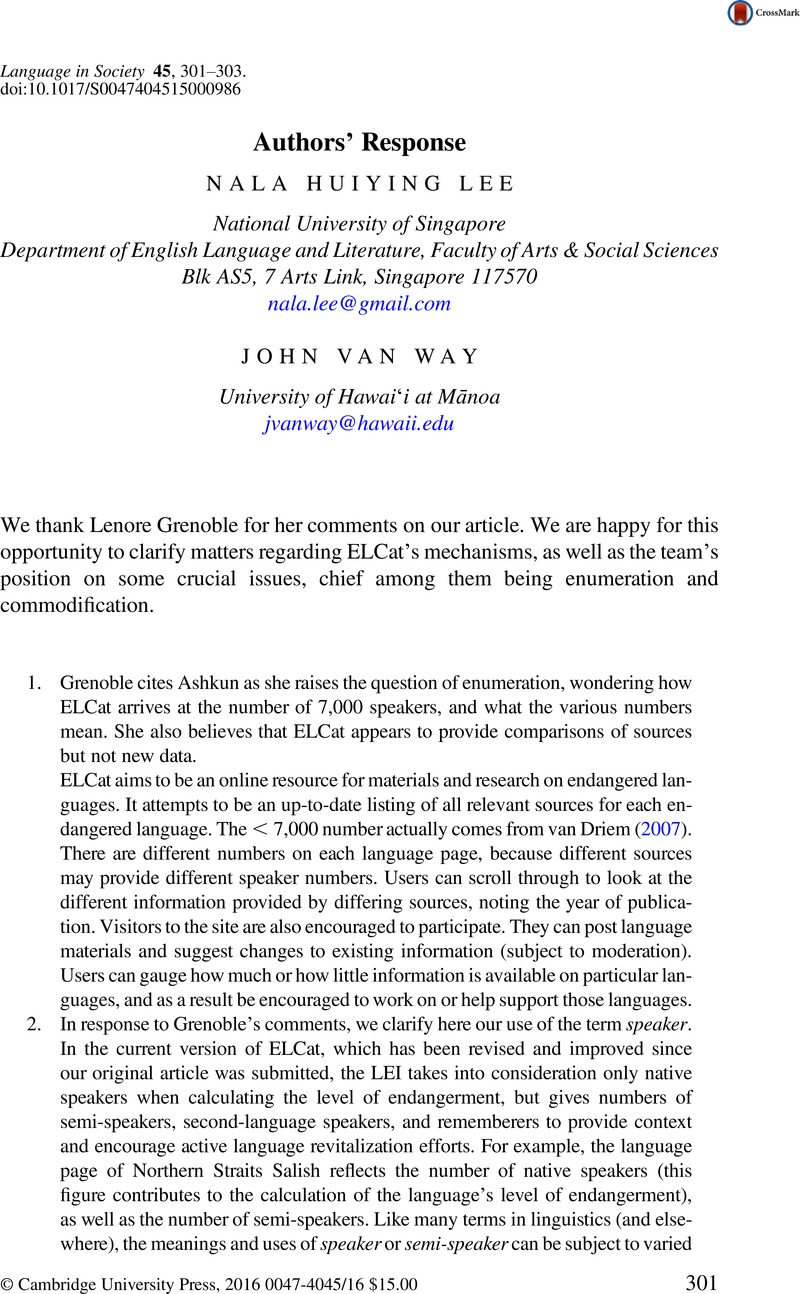No CrossRef data available.
Article contents
Authors' Response
Published online by Cambridge University Press: 21 March 2016
Abstract
An abstract is not available for this content so a preview has been provided. Please use the Get access link above for information on how to access this content.

- Type
- Reply
- Information
- Copyright
- Copyright © Cambridge University Press 2016
References
Bonfiglio, Thomas Paul (2010). Mother tongues and nations: The invention of the native speaker. New York: Walter de Gruyter.CrossRefGoogle Scholar
Davies, Alan (1991). The native speaker in applied linguistics. Edinburgh: Edinburgh University Press.Google Scholar
Lee, Nala H. (2014). A grammar of Baba Malay with sociophonetic considerations. Mānoa: University of Hawai‘i dissertation.Google Scholar
Negi, Harvinder (2012). A sociolinguistic profile of the Kinnaura tribe. Nepalese Linguistics 27:101–105.Google Scholar
Singh, Rajendra (ed.) (1998). The native speaker: Multilingual perspectives. New Delhi: SAGE.Google Scholar
van Driem, George (2007). South Asia and the Middle East. In Moseley, Christopher (ed.), Encyclopaedia of the world's endangered languages, 283–348. London: Routledge.Google Scholar



